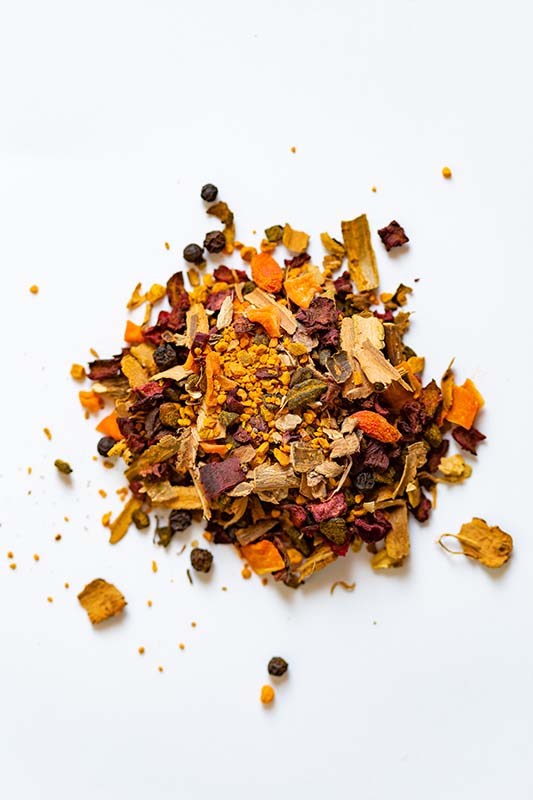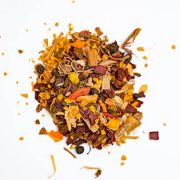The following books and recipes have been used frequently by me over the years;
River Cottage – light and easy – Hugh Fearnley-Whittingstall.
 This is a wheat and milk free cook book. I've found some that are also gluten and sugar free and many that are egg free and that also follow food combining principles. Here are some excellent recipes;
This is a wheat and milk free cook book. I've found some that are also gluten and sugar free and many that are egg free and that also follow food combining principles. Here are some excellent recipes;
Breads – Carrot cornbread p67, Socca p74,
Soups – Chickpea soup p114, Roasted fennel & lemon soup p122, Creamy roasted tomato soup p12,
Salads – Tomatoes with tahini p166,
Veg – Caper & olive pesto p278,
Fruit – Pear, ginger and cashew fool p332,
Treats – Castagnaccio p366 (use coconut nectar sugar instead of brown sugar), Chestnut marmalade muffins (2 eggs for 10 muffins) p376, Spiced date and almond cookies p387 (2 eggs for 12-14 cookies), Cashew cream p394
Leon – Fast vegetarian – Jane Baxter & Henry Dimbleby.
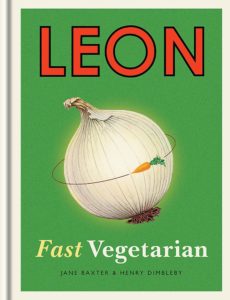 A very inspiring cookbook and packed with great food ideas. A journey of food and family, complimented with lovely photography. Happy cooking!
A very inspiring cookbook and packed with great food ideas. A journey of food and family, complimented with lovely photography. Happy cooking!
Veg Stock – p23,
Soups – Spinach & lentil soup p59,
Fritters & Pancakes – Turnip pancakes p99,
Curry – Stuffed aubergine curry p177 (you don't need to have small aubergines, just slice thinly)
River Cottage – much more veg – Hugh Fearnley-Whittingstall
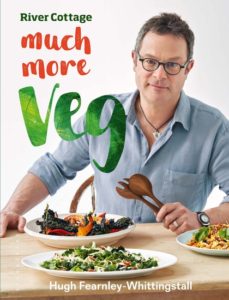 Red pepper and olive hash – A creative and tasty way to use leftover cooked spuds or mash. p22,
Red pepper and olive hash – A creative and tasty way to use leftover cooked spuds or mash. p22,
Fragrant veg stoup – A comforting dish, somewhere between a stew and a soup. p64,
New potatoes and lentils with coriander and tamarind sauce – delicious. p98,
Green garlic and carrots with preserved lemon – This simple side-dish is a real delicacy and treat for the senses. p114,
Roast squash and walnuts, two ways – A light dish that works great with salad leaves. p127,
Fennel, lentil and seaweed soup – It turns out velvety in texture, need I say more! p203,
Carrots with dukka and preserved lemon – A tempting mix of bashed nuts and spices. p250,
Green new potatoes – Hot little new potatoes, fantastic tossed with this lovely raw sauce. p323,
Squash mash – Enriched with peanut butter, trickled with chili oil, quite tasty. p358,
Deliciously Ella – with friends – Ella Woodward.
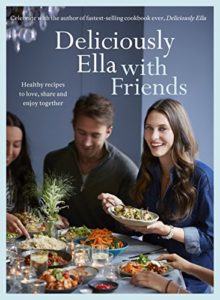 Great book with exiting and wholesome recipes. Ella provides an abundance of additional information on healthy eating in all of her books and if your new to eating a plant based diet this book is a fantastic starting point.
Great book with exiting and wholesome recipes. Ella provides an abundance of additional information on healthy eating in all of her books and if your new to eating a plant based diet this book is a fantastic starting point.
Sweet poatoe noodles with a creamy peanut satay sauce – tastes as good as it sounds! p86,
Garlicky black beans – A simple way of adding rich flavour to any meal, healthy & hearty. p190,
The case for soup stock, wild foods and eating more fruit
It is common knowledge that the soil is far more depleted now than decades ago. A study of British nutrient data from 1930 to 1980, published in the British Food Journal, found that in 20 vegetables the average calcium content had declined 19 percent; iron 22 percent; and potassium 14 percent. Vitamin levels are even more depleted. The Kushi Institute analysis of nutrient data between 1975 and 1997 found vitamin A levels down 21 percent, and vitamin C levels 30 percent. These reports are more than 20 years old now so the situation will be worse now. Add to this soil depletion, fertiliser 'enhanced', herbicide raised, pesticide sprayed, genetically altered and hydrogen ripened and the fact that because fertilised food is forced to grow more quickly their roots are more shallow – all these are good reasons to buy organic whenever you can. Organic plants are allowed to ripen in their own time so they have deeper roots which take up more space and are therefore better able to store nutrients, this is especially true of fruit, since many fruits grow on trees
So to increase your nutrient levels;
-
Eat more wild foods that haven't had the nutrition breed out of them. For example dandelions have seven times more phytonutrients than spinach, which we consider a “superfood.”
-
Make a stock for your soup – by boiling a large quantity of vegetables you have the resultant water which is swimming in nutrients (yes I know the argument about eating raw food for higher vitamin and mineral content but warming food helps with assimilation, especially if your digestion is not so strong and the cold energy of raw food can compromise your ability to turn the food into available energy).
-
Eat more fruit. Since many fruits come from trees and tree roots go deeper there is more chance that the nutrient they are
The following stock and soup recipes are ones that have impressed me over the years and to which I frequently return (some of them have been adapted slightly);
Making a good stock
Stocks can be made from scraps and peelings but will always taste richer and fuller if you use the main body of the vegetables. This is a recipe from Leon, Fast Vegetarian (p23) with some minor adaptions
2 tablespoons of olive oil
2 onions
2 sticks of celery
1 leek
2 carrots
1 slice of swede
150 g mushrooms
150 g fresh tomatoes
4 cloves of garlic
2 bay leaves
parsley stalks (fresh or dried)
1 tablespoon black pepper
-
Heat the oil in a large pan and add the onions, turn down to a very low heat so that you the sweetness will come out of the onions whilst you chop the celery and leeks. Twist the bay leaves without breaking them completely and add them. Next the carrots and swede and then the rest of the ingredients.
-
Add enough water to cover all the vegetables and a bit more.
-
Bring to a boil, reduce the heat to a simmer and simmer for an hour with a lid on (allow some air to come out either through the hole in the lid, or by not covering it completely). Strain pushing down on the soft veg to extract all the goodness.
Use for the following (these serve 2 – 4 people depending on your appetite!);
French Onion Soup from Recipes for Self-Healing by Daverick Leggett
"The art of making a good onion soup is to cook the onions slowly"
Ingredients
6 onions
2 tablespoons of olive oil
1/2 tablespoon of toasted sesame oil (Daverick only uses 1/2 teaspoon)
1 – 2 teaspoons of dried thyme (1 given)
1 teaspoon of dried rosemary (1/2 given)
2 bay leaves
2 tablespoons of tamari
2 tablespoons of miso
water as required.
Method
-
Chop the onion. Heat the oil and add the onions and all the herbs, stirring occasionally. Cook slowly for 30 – 45 minutes without burning (if you turn the flame down to it's lowest you only need to stir very occasionally)
-
Add the water and tamari, bring to a boil and simmer for about 10 minutes. Scoop out a bit of the water into a cup, break up the miso in this and return to the pot (it's not good to boil miso as you lose the nutrients out of it easily that way). Add extra tamari to taste.
Silky celeriac soup (The Medicinal Chef, Healthy Every Day, Dale Pinnock)
Ingredients
olive oil
1 – 2 large white onions (a sweeter variety)
3 cloves of garlic finely chopped
One medium – large celeriac, peeled and diced
Method
-
Heat the oil in a large pan, add the onion (I always get the onion cooking first) and garlic and cook for 10 mins or until soft. Add the celeriac and cook for another 5 mins.
-
Add enough veg stock to cover, a little salt and pepper if you like, reduce heat to simmer until celeriac has softened, about 15 minutes.
-
Use a stick blender to make a smooth, silky soup.
Daverick says it has an anti inflammatory effect on the upper-to-mid digestive tract and its anti inflammatory effect makes it good for joints and bones.
Chickpea Soup (River Cottage, light and easy, Hugh Fearnley-Whittingstall – a favourite cook book)
Ingredients
3 tablespoons extra virgin rapeseed or olive oil
4 garlic cloves
2 tablespoons chopped preserved lemon
A pinch of dried chilli flakes (optional)
2 x 400g packets of chickpeas, drained and rinsed
800 ml of hot veg stock
1 heaped tablespoon of tahini
Leaves from a small bunch of flat-leaf parsley, chopped
Smoked paprika, to finish
Method
Place a saucepan on a medium heat. Add half the oil, the garlic, preserved lemon and chilli flakes if using. Fry gently for a few minutes, letting the garlic soften but not colour,
Se aside about 5 tablespoons of the chickpeas. Add the remainder to the saucepan, mix well and cook for a further minute. Pour over 750 ml of hot stock and spoon in the tahini. Bring to a simmer and cook for 2 – 3 mins.
Puree until smooth. Add a little more stock if the soup seems very thick but keep the texture nicely creamy, Season with salt and pepper to taste.
Mix the parsley with the reserved chickpeas and the remaining extra virgin olive oil. Spoon the herby chickpeas on top of the soup and finish with a pinch or two of smoked paprika.
Very Green Soup (River Cottage, light and easy, Hugh Fearnley-Whittingstall – a favourite cook book)
Ingredients
2 tablespoons rapeseed or sunflower oil
1 onion
1 large carrot, peeled and grated
1 garlic clove (optional – 1/2 is given)
100g spinach, any tough stalks removed
100g flat leaf parsley or watercress, or 50 g of each (fresh young nettle tops instead is given to replace this or the spinach to create 'spring nettle soup')
salt and pepper
Method
-
Add oil to a large saucepan, when hot, add onion, carrot and garlic, if using, Sweat gently to soften.
-
Add the spinach and parsley and/or watercress, about 3/4 of the stock and salt and pepper. Bring to a simmer and cook for a few mins until the leaves have wilted. Turn off the heat.
-
Blitz with a stick blender
